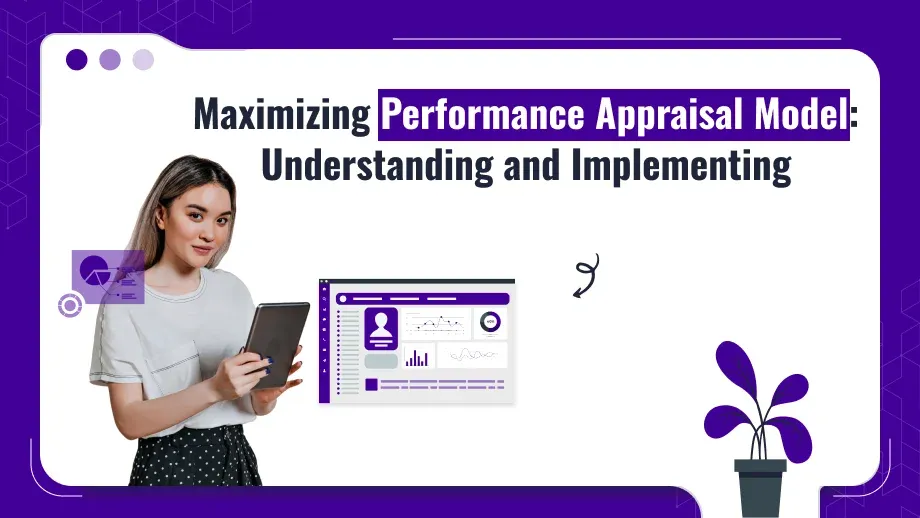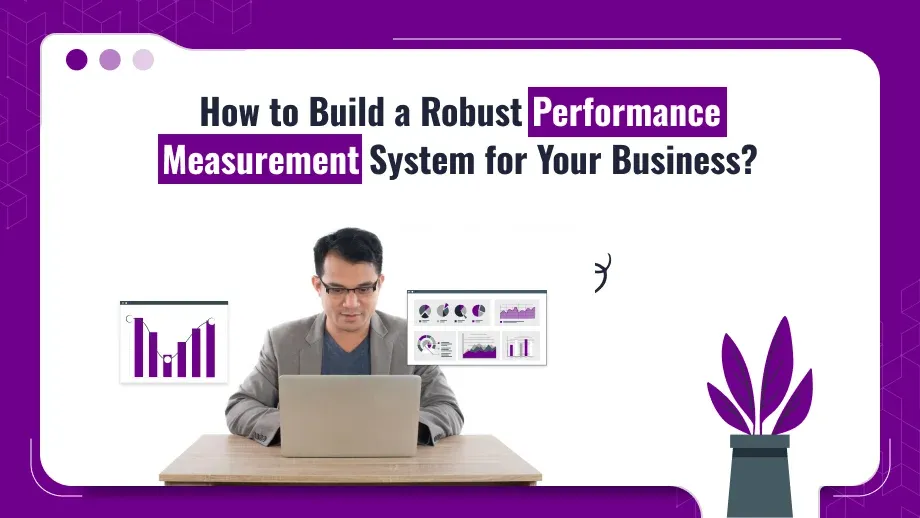
An employee’s performance during a specified time period is evaluated in an organization through a Performance appraisal model. Performance reviews have actual meaning and are not merely customary or usual. It assesses each employee’s strengths and shortcomings in order to align their performance with the organization’s.
Performance reviews are a potent tool for raising performance appraisal methods in hrm. today’s cutthroat business climate while also altering the culture of the company. Performance appraisal models give a systematic framework that shows how such appraisals should be conducted objectively, in a manner that is all-rounded and enhances growth.
This blog explores various kinds of performance appraisal methods followed in HRM, their actual implementation, benefits, and some challenges faced while implementing and helps the organization to achieve the right approach to build employee development and align its performance with strategic objectives.
What is a Performance Appraisal Model?
A performance appraisal model is a systematic structured framework designed to evaluate employee contributions fairly and systematically. Such models enable organizations to measure their employee contributions against clearly stated criteria to provide a more objective method of assessment.
Performance appraisal models differ from general appraisal practices in that they offer a comprehensive method of appraising various aspects of performance. Such methods include specific metrics, feedback mechanisms, and assessment tools that help give a holistic view of the contributions of an employee.
The importance of the performance model cannot be emphasized any further. They help discover high performers and areas in which the employee needs extra training or support. By having a constant model, organizations can encourage a feeling of accountability and improvement continually. In addition, such models will ensure that the process will be aligned with the organization’s goals, and strategic planning and resource management may be better achieved.
In a nutshell, performance appraisal models are guiding tools that help organizations measure the performance of employees, develop them in their personal lives, and improve the effectiveness of an organization as a whole. Different types of models can help organizations select the most suitable one for their needs.
Types of Performance Appraisal Model
Traditional Performance Appraisal Models
Rating Scales: This type uses a rating scale with marks allocated to employees such as quality of work, communication, and teamwork done (1-5). A rating scale is straightforward, but simple rating scales may also decrease the complexity and accuracy in performance, resulting in wrong assessment at times. The application of rating scales is said to be naturally subjective.
Forced Ranking: This involves ranking staff against one another. Percentages of a given range are then allocated in such performance brackets (top 20%, middle 70%, and bottom 10%). In spite of it making top performers work hard, this often breeds unhealthy competition, where morale becomes a victim, especially in employees undervalued or misassessed.
360-Degree Feedback
This model sources feedback from all peers, subordinates, supervisors, and sometimes customers. A 360-degree picture of the worker’s performance is made possible by these many viewpoints. The holistic approach to evaluation, the promotion of transparency, and the identification of a development area that would have gone overlooked with more conventional review techniques are some of the benefits of 360-degree feedback. Its implementation is challenging and needs to be assimilated with cultural change in order for the receiving end to constructively appreciate the feedback.
Management by Objectives (MBO)
MBO is defined as specific, measurable objectives set at the beginning of a performance period for employees. After that, the performance is rated based on the objective accomplished. This model tends to align individual goals with organizational objectives; this encourages responsibility. The model may, however, tend to be so focused on the quantifiable results such that the qualitative aspects are left behind.
Behaviorally Anchored Rating Scales (BARS)
BARS employs a combination of both qualitative and quantitative evaluation through the anchoring of rating scales on behaviors. For instance, instead of rating “communication skills an assessor would use to refer to specified behaviors exhibited in effective communications. Therefore, this makes better expectations and reduces ambiguity hence very accurate assessments. The designing of a BARS may take a lot of time and requires understanding of a desirable behavior.
Continuous Performance Management
Contrary to this, this model relies more heavily on continuous performance management. Checks are made regularly rather than once a year appraisal. Continuous performance management lends itself to real-time feedback where people can take action and address their performance amid the year. This will possibly improve engagement and accountability as people get timely recognition and support. Organizations, however, must train managers to give constructive feedback regularly.
Elevate your employee evaluation process!
Explore the perfect performance appraisal model for your organization and unleash the potential for growth and success.
Choosing the Best Performance Appraisal Model
The right performance appraisal model helps in ensuring effective employee appraisals. There are a number of considerations that guide such choice as follows:
Organizational Culture: The model chosen needs to resonate with the organization. For example, the more team-oriented company with group dynamics will be appropriate in a 360-degree model while a more strictly controlled hierarchy will prefer more conservative rating scales or MBO.
Size and Structure: Large organizations are more likely to implement formal structures such as BARS or MBOs in order to ensure standardization throughout all departments. Smaller organizations may have a smoother continuity of performance management since continuous monitoring can foster close personal ties between the employees and their managers.
Alignment with Objectives: The model selected has to help achieve the organization’s strategic objectives. For example, if an organization needs to increase innovation, a model focused on creativity and problem-solving skills, like continuous feedback, would be preferred.
Employee Engagement: Engaging employees in the process of choice can help them buy into the idea and be willing to accept it. If they understand the benefits of the model chosen and how it may help them grow, they’ll accept the appraisal process.
Finally, the appropriate performance appraisal model should allow for individual development and organizational success. The selected model should always be reviewed and improved over time to consider feedback and outcomes.
Best Practices on Implementing Performance Appraisal Model
Implementing an appropriate scope of performance appraisal requires proper planning and execution. The following are some of the best practices to be considered:
Training of the Evaluators: Managers and evaluators must be trained well. In such training, details must be included about the chosen model, with an insistence on fair and constructive evaluations. The provision of actionable feedback to the evaluators would contribute to a more positive appraisal experience for employees.
Clear Communication: Organizations should clearly let their employees know what appraisal processes, expectations, and criteria are. Transparentsation will eradicate all kinds of confusion and anxiety in terms of appraisal so that the employees are well prepared for the assessment and can understand how they are being assessed.
Regular Review and Modification: Models of performance appraisal tools should not be static. Organizations should study the efficacy of the model periodically and make the needful change according to the feedback from both evaluation and employees. This avoids the appraisal process from falling behind and hence becoming counterproductive.
Through this best practice, organizations are able to create a system of performance appraisal that does not only appraise good employees but also develops and improves professional growth and development.
Problems with Performance Appraisal Model
Even though performance appraisals are crucial for the development of employees, several barriers exist that limit their effectiveness:
Lack of objectivity: The major obstacle to the success of performance appraisals is biasness in the evaluations. Subconsciously, assessors may favor some employees more than others. This results in unfair appraisal. Organizations can overcome this by training the assessors and having standardized evaluation criteria.
Resistance from Employees: Appraisals can be resisted by employees who fear being punished. Building a culture of trust and emphasizing the developmental aspects of performance appraisals can help alleviate these concerns.
Fairness: An organization must make sure that the assessment process is fair since preserving employee morale is crucial. Transparency must be achieved by consistent criteria and processes so that all employees are treated equitably.
This calls for persistent effort and commitment but at the end, an organisation that does this shall give rise to a more interactive as well as productive workforce.
Conclusion
Performance appraisal models, therefore, are an inevitable tool for any organisation searching for ways to bettering the performance of employees or perhaps getting individual contributions towards an aligned strategic goal. Any organisation can select an appropriate type of model in its current culture and objective and this thus facilitates a more effective type of evaluation process.
From traditional rating scales to modern continuous performance management, each model has unique merits and demerits. Implementation best practices along with the potential pitfalls would ensure the positive contribution of performance appraisals to employee development and organizational success.
The significance of a good performance appraisal process must, therefore, be recognized by companies. In the process of selection and implementation, a company spends valuable time and resources in laying down the environment of responsibility and constant improvement, which also leads to employee commitment in the long run for successful business management.





